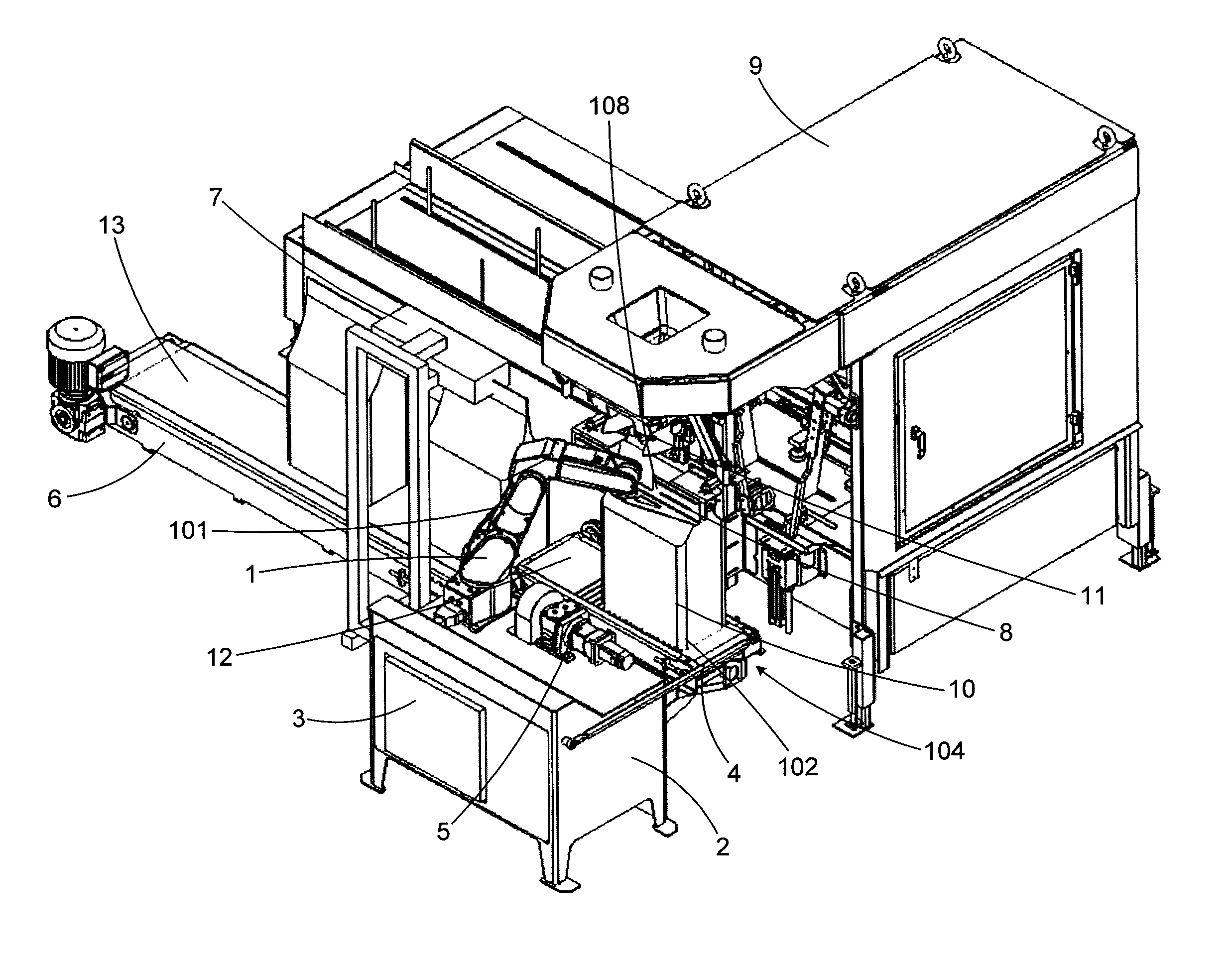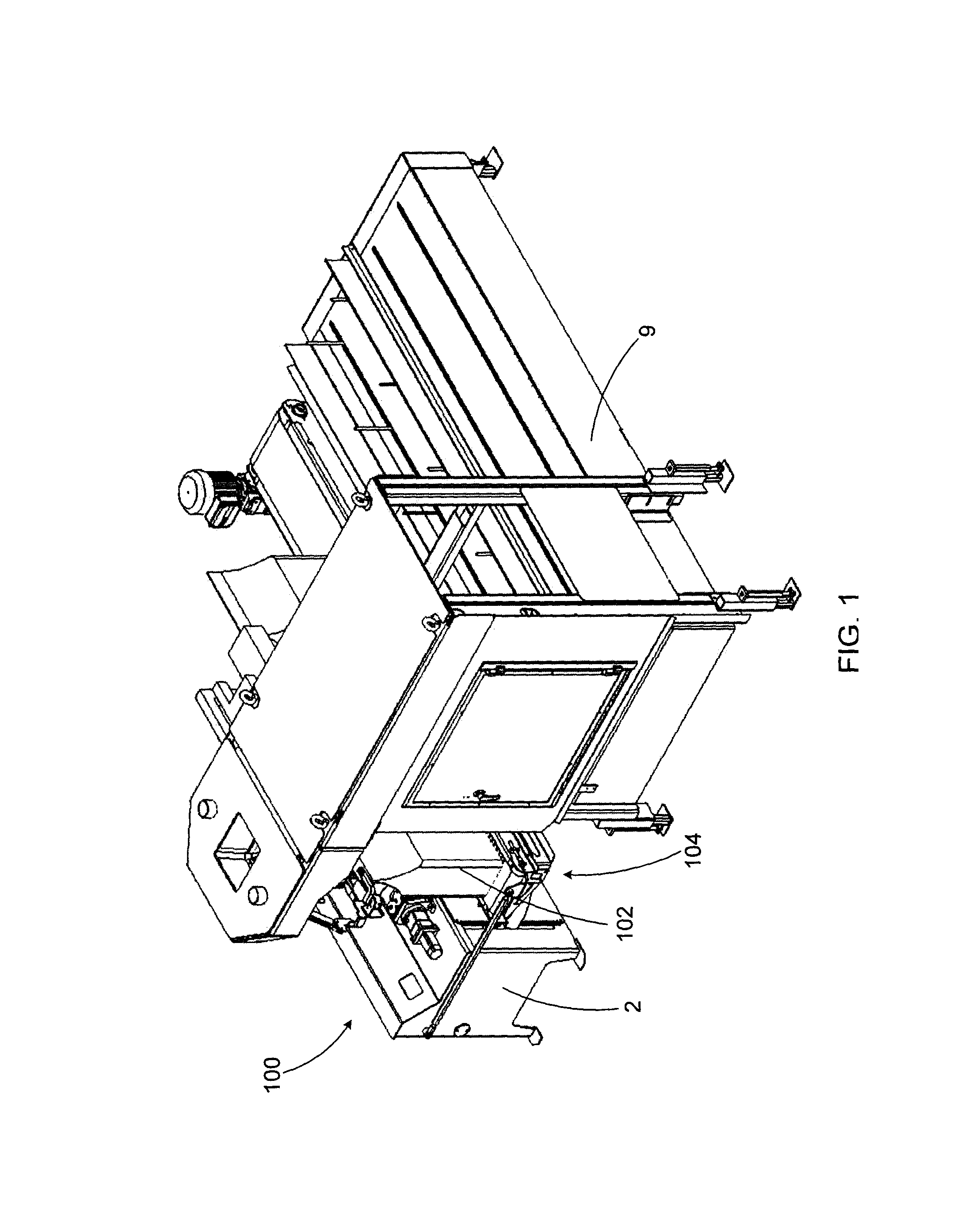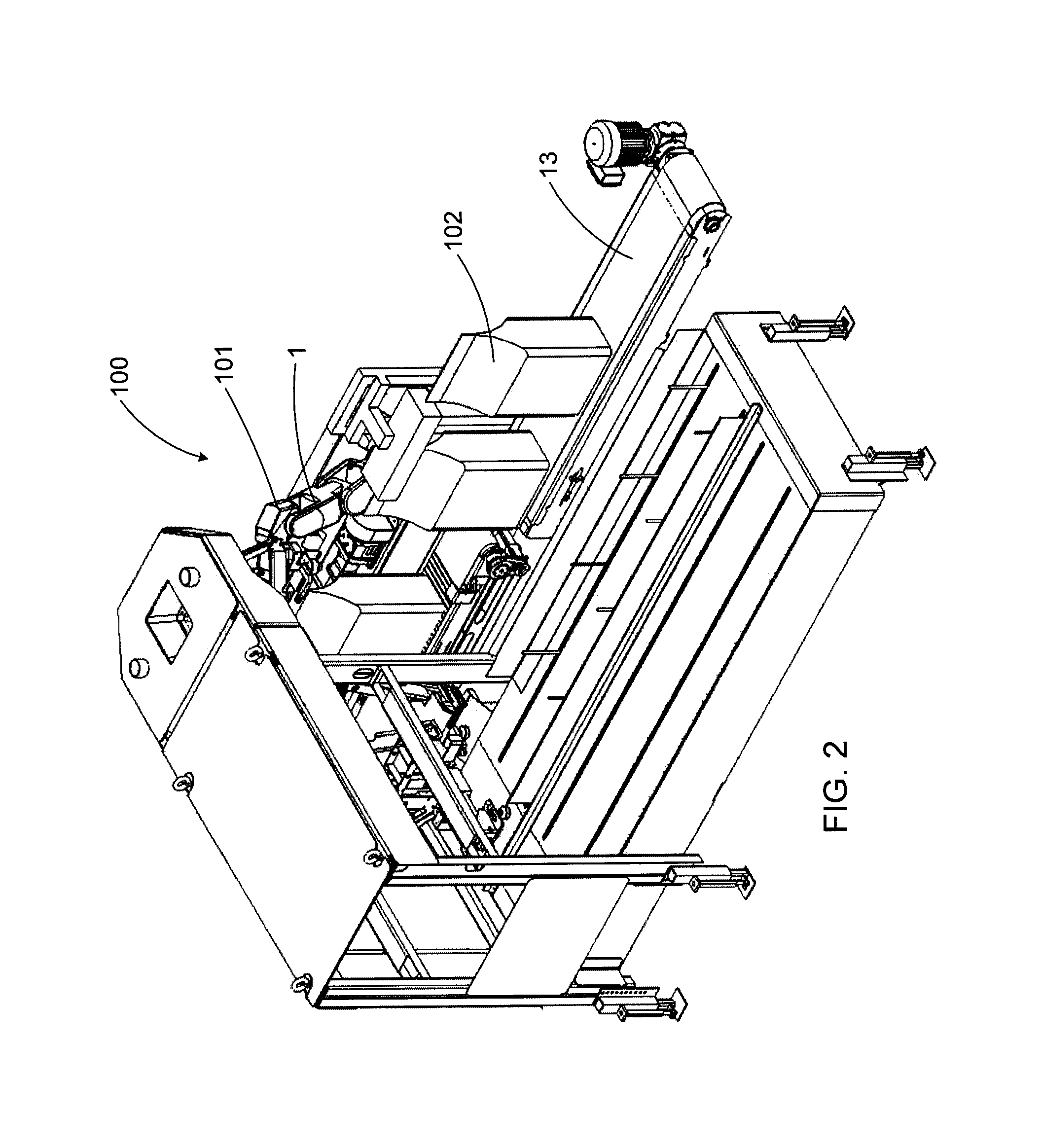Robotized transport and transfer system
a robotized and transfer system technology, applied in the field of packaging systems, can solve the problems of losing control of the shape of the bag, reducing the quality of the bag, and reducing the cost of purchasing manual baggers, so as to simplify the tool support and reduce the cost. the effect of cost and high quality
- Summary
- Abstract
- Description
- Claims
- Application Information
AI Technical Summary
Benefits of technology
Problems solved by technology
Method used
Image
Examples
Embodiment Construction
[0044]As shown in FIGS. 1 to 8, the present invention provides a system (100) for transferring and transporting a flexible package (102). The system (100) includes a multi-axis robot (101) for transferring and displacing the flexible package (102) between a first position (namely a filling point) and a second position (namely a closing point). The system also includes a lift-assist platform (104) for transporting the flexible package (102). The lift-assist platform (104) substantially supports a weight of the flexible package (102). The lift-assist platform (104) comprises a displacing system (4) for displacing and supporting the flexible package (102) upright between the first and second positions. The platform (104) is positioned within reach of the multi-axis robot (101).
[0045]Preferably, the multi-axis robot (101), in certain configurations, maintains the flexible package (102) between the first position and the second position.
[0046]Preferably, the system (100) comprises a cent...
PUM
| Property | Measurement | Unit |
|---|---|---|
| flexible | aaaaa | aaaaa |
| weight | aaaaa | aaaaa |
| displacement | aaaaa | aaaaa |
Abstract
Description
Claims
Application Information
 Login to View More
Login to View More - R&D
- Intellectual Property
- Life Sciences
- Materials
- Tech Scout
- Unparalleled Data Quality
- Higher Quality Content
- 60% Fewer Hallucinations
Browse by: Latest US Patents, China's latest patents, Technical Efficacy Thesaurus, Application Domain, Technology Topic, Popular Technical Reports.
© 2025 PatSnap. All rights reserved.Legal|Privacy policy|Modern Slavery Act Transparency Statement|Sitemap|About US| Contact US: help@patsnap.com



